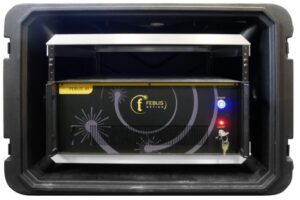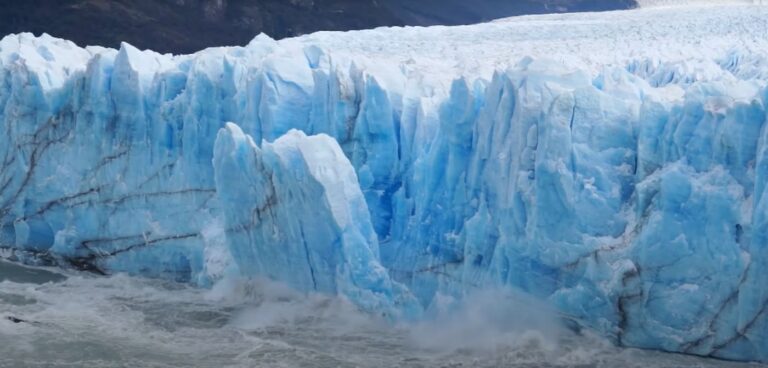A pilot project by the University of Washington (UW) in Washington is exploring the use of fiber-optic sensing for seismology, glaciology and even urban monitoring, at its new Photonic Sensing Facility.
According to the researchers, Brad Lipovsky and Marine Denolle, the fiber-optic cables that travel underground, along the seafloor and into homes, have potential besides transmitting virtual entertainment. These signals can also record ground vibrations as small as a nanometer anywhere the cable touches the ground. This unintended use for fiber-optic cables was discovered decades ago and has had limited use in military and commercial applications. The new center will explore fiber optics for sensing ground motion to greatly expand the amount of seismic data for environmental monitoring.
Funded in part with a US$473,000 grant from the M J Murdock Charitable Trust, a non-profit based in Vancouver, Washington, the new UW Photonic Sensing Facility has three decoder machines, or “interrogators,” that use photons traveling through a fiber-optic cable to detect ground motions as small as 1nm.
Lipovsky, the principal investigator and a UW assistant professor of Earth and space sciences, said, “Fiber-optic sensing is the biggest advance in ground-based geophysics since the field went digital in the 1970s. The UW Photonic Sensing Facility and its partners will explore this technology’s potential across scientific fields – including seismology, glaciology, oceanography and monitoring hydrology and infrastructure.”

For now, one of the three UW interrogator machines is hooked up to a “dark fiber,” or unused cable, that runs between the UW campuses in Seattle and Bothell. The researchers plan to also connect to a similar underwater cable across Alaska’s Cook Inlet to sense volcanic, oceanic, glacial and tectonic systems there. The other equipment will be used for temporary deployments.
When the ground vibrates – due to a heavy truck, construction work or an earthquake – the seismic waves travel out from the source like ripples on a pond. When a seismic wave reaches the fiber-optic cable, the cable stretches very slightly, and that disrupts photons that are naturally reflected back to the source. The researchers can detect this disruption in the returning light waves and determine where the cable was disturbed. The technique is known as distributed acoustic sensing (DAS) because the system is spread out and can be used to monitor both sound waves and ground motion.
The same technology can also record more gradual motions. Lipovsky and UW graduate student John-Morgan Manos carried equipment up to Easton Glacier on Mount Baker in Washington state to monitor the rate of surface melt. The team installed a cable and used an interrogator to see how much snow was melting on the glacier.
In other pilot projects, UW researchers with the Pacific Northwest Seismic Network are exploring uses for seismology, including earthquakes, volcanoes and landslides. The oceanographers at UW will use fiber-optic cables connecting to a seafloor observatory to monitor ocean faults and eavesdrop on whales. The university’s civil engineers will study whether this technology could monitor traffic collisions or building and bridge infrastructure.
The facility will include semi-permanent observatories in Seattle and other unused “dark” fibers, including a cable that runs to Whidbey Island. The team also plans to lay cables for temporary field deployments at Mount Rainier and is exploring projects farther afield at a fjord in Greenland and at McMurdo Station in Antarctica.
Researchers Brad Lipovsky and Marine Denolle explain how fiber-optic cables can be used to sense ground motion. Credit: Kiyomi Taguchi/ University of Washington
Marine Denolle, an assistant professor of Earth and space sciences at UW, commented, “We’re getting to the ‘smart Earth’ concept, where we can listen to the Earth. This technology allows seismic sensing to go to places you could not go before – where it was too hard, or too expensive, to deploy sensors. The other aspect that’s new is a density of sensors beyond what we had before. In seismology, our data used to be just wiggles. This is the first time we can get 2D images, and even videos, of data streaming in.”
Current seismometers record ground motion at a single point, whereas fiber-optic cables take measurements at many points along the cable – the test cable has 15,000 data channels. Denolle will use computing and machine learning to make sense of this new mountain of seismic data.
The grant was awarded in late 2021. Researchers have used the funds to hook up and test the equipment last spring, and a data-visualization room on campus is coming soon. Other funders are the UW and the UW-based Pacific Northwest Seismic Network.



